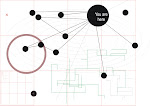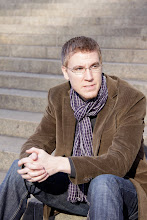
John Berger, the art theorist, has referred to photography is a” way of seeing.” “The photographers way of seeing is reflected in his [or her] choice of subject.”[1] Berger adds “our perception or appreciation of an image depends also upon our own way of seeing.”[2] Photography, literally means “light writing” or perhaps more accurately “light drawing.”[3] Photographers essential work is with light, angles, focus, and distance to bring about a convincing composition to include what they feel should, and should not, be in the frame. Each photograph that is taken is just one of an infinite number of angles and f-stops centering on careful and creative compositions balanced by the skill of managing the mechanism. A photographer cultivates a keen vision of the world as seen through the lens of the camera.
Margaret Miles, in her Image As Insight, reminds us that religion too has often been described as a “way of seeing”[4] not just with actual eyesight, but with insight. A vision that peers beyond the common surface and into the depths of existence. This movement from eyesight to insight “implies perceiving a quality of the sensible word, a numinosity, a ‘certain slant of light,’ in which other human beings, the natural world, and objects appear in their full beauty, transformed.”[5]
Both photography and religion have been described as “ways of seeing.” For Peter Berger, photography is concerned with the creative compositions of light and matter, texture and shadow, angles and f-stops. Yet for Margaret Miles, religion uses the same eyesight as insight into the Light beyond, behind, or within the matter itself.
Perhaps there is a similar thread of awareness between the photographer and the religious person…always looking for beauty.
Margaret Miles, in her Image As Insight, reminds us that religion too has often been described as a “way of seeing”[4] not just with actual eyesight, but with insight. A vision that peers beyond the common surface and into the depths of existence. This movement from eyesight to insight “implies perceiving a quality of the sensible word, a numinosity, a ‘certain slant of light,’ in which other human beings, the natural world, and objects appear in their full beauty, transformed.”[5]
Both photography and religion have been described as “ways of seeing.” For Peter Berger, photography is concerned with the creative compositions of light and matter, texture and shadow, angles and f-stops. Yet for Margaret Miles, religion uses the same eyesight as insight into the Light beyond, behind, or within the matter itself.
Perhaps there is a similar thread of awareness between the photographer and the religious person…always looking for beauty.







